One of the greatest challenges in designing an expansion for War of the Ring is how to add new elements to the game without breaking the balance.
The action dice system is especially important. In War of the Ring, the Shadow has a significantly greater number of actions in a turn than the Free Peoples, starting with 7 dice against 4, and with the possibility of getting up to 10 actions when the Witch-king, Saruman and the Mouth of Sauron are in play. However, a part of these dice may end up, willingly or not, in the Hunt Box, and the mustering of these powerful Minions allows the Free Peoples player to get Gandalf the White in play.
The Free Peoples player only has 4 action dice in the beginning, and gains 2 more when Gandalf the White and Aragorn, Heir to Isildur are in play. The timing of these arrivals is not certain – both of them need a Will of the West roll, so if the Free Peoples player does not roll such a die, he may have a shortage of actions in the early turn and be at a disadvantage.
The balance is very delicate, and the Second Edition improved it – by forcing the Shadow player to allocate one die to the Hunt Box if the Fellowship is moving, and by making more difficult an early arrival of the Witch King, the Black Chieftain. In the first edition, the Shadow player had the possibility of doing a military blitz, by recruiting both the Witch-king and Saruman very early in the game, and placing no dice in the Hunt Box. Such an “extreme strategy” became more difficult with the Second Edition rules, and the game became more balanced as a result.
In Battles of the Third Age, the solution that was used was a different one, but with unexpected “collateral effects”. The Free Peoples player had the possibility of playing Galadriel, and she provided the precious 5th action die normally gained from Gandalf the White. The die was lost if the White entered the game, but in this way the Free Peoples player was less subject to the whims of the roll of the dice. While in 1st Edition, a delayed Will of the West could spell the doom of the Free Peoples player, the presence of Galadriel prevented this risk. But this happened at the price of making the battle for Lórien much more important than it is in the books, because the Shadow had every reason to try to overcome the Elven Stronghold early in the game.
When designing Lords of Middle-earth, we realized that it was indeed desirable to give to the Free Peoples player multiple paths to improve his action capability with alternatives to Gandalf and Aragorn. In this way, the range of available strategy would grow: For example, we could have a game with Gandalf leading the Fellowship till Mt. Doom, or with Strider sacrificing himself to save the Ring-bearers, options which are not really viable with the basic game, except at great risk.
However, we had to balance this need with the changes to the 2nd Edition rules, and the necessity to keep the strategic importance of Lórien to a reasonable level.
The mechanic we developed for the Keepers’ dice was the key. Individually, each Keeper’s die is less powerful than a normal action die, as it does not have die faces with multiple actions, such as the Army/Muster or the Will of the West, and one of the die faces is actually negative for the Free Peoples. One of the faces is an “Eye” result that, when rolled, is added to the Hunt Box, giving an advantage to the Shadow.
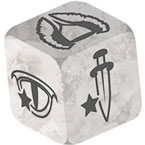
Nenya
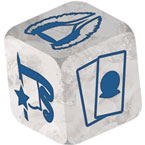
Vilya
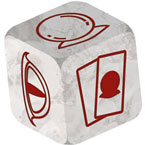
Narya
Thematically, this represents the fact that Sauron may take advantage from the use of the Rings of Power, if that becomes less than subtle, and mechanically makes these dice less powerful than a normal action die. When multiple Keepers are in play, the Free Peoples player rolls all of them, and can choose the result he prefers, making them more powerful. But the risk is greater as well, because if any of the dice shows an Eye result, all of them are lost. This introduces a very interesting “push your luck” element in the use of the Keepers: using Elrond, Galadriel and Gandalf, Keeper of Narya may be very interesting, but also very dangerous…
As a further way to balance the presence of these additional dice, we also developed an improved version of the mechanic used by Galadriel. In Battles of the Third Age, if the White enters the game, Galadriel loses her die, period. In Lords of Middle-earth, when Gandalf the White is in play, you don’t immediately lose Keeper’s dice; however, they go out of the game if the best actions they have are used, or if the “Eye” is rolled. This means that once the White is in play, the Keepers’ dice will “phase out”, but in a gradual way, providing a lot of different choices and difficult decisions to the Free Peoples player. Do you do the effort of mustering both Elrond and Galadriel, at the risk of seeing their powers diminished by the arrival of the White? Do you risk the gamble of multiple Keepers in play, and losing their dice to the power of the Eye? Or do you get a new Keeper in play only when another is lost? Do you use Elrond and Galadriel as a “replacement” to either Aragorn or Gandalf the White - to keep one or both of the two most powerful Companions inside the Fellowship - or do you go for a more “traditional” strategy, get Gandalf the White in play, and use Elrond and Galadriel mostly for their powerful character abilities?
An especially interesting new option is that the Free Peoples player may decide to use Gandalf, Keeper of Narya as an alternative to the Gray Wanderer/White combination. The new version of Gandalf, when guiding the Fellowship, gives to the Free Peoples player his Keeper’s die, so that instead of “killing” Gandalf the Grey as soon as possible, he can keep him as the Guide of the Fellowship. He does not get the 5th action die, but still has his “lesser” die, which can possibly be combined with Elrond’s and Galadriel’s dice as well.
One of the interesting things of the playtesting process is that our expert players find a lot of interesting ways to abuse of new abilities… the new Gandalf was again subject to the risk of becoming something very different from what we envisioned, a Wizard at the head of the Fellowship using Narya as a guiding light… With the initial version of his rules, the Free Peoples player could place him at the Guide of the Fellowship... but if the Fellowship did not leave Rivendell, and he still benefited from his additional die… of course, while trying to achieve a military victory! To prevent this unintended effect, now Gandalf, Keeper of Narya only gets his die if the Fellowship is going, further reinforcing the mechanic introduced by 2nd Edition rules that gives a small “advantage” to the Free Peoples if the Fellowship is moving.
With the new Keeper’s dice mechanic redesigned, and refined through the playtest process, new strategies for the Free Peoples were created… but what about the Shadow?

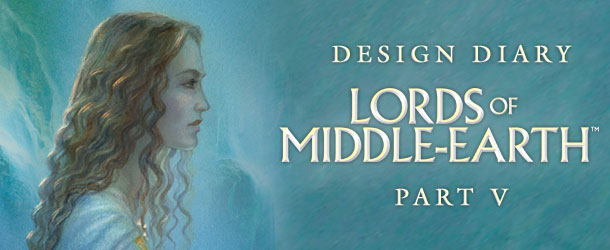
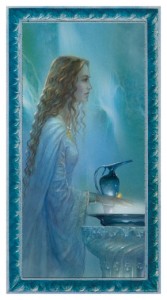
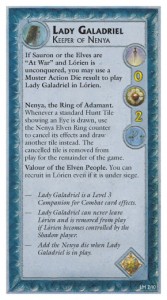








Follow Us on